Next Meeting
January 8, 2026
10:30 AM
Headwaters Corp
4111 4th Ave, STE 6
Kearney, Nebraska
-------------------------
-------------------------
|
Invasive Weeds On The Platte River
|
Photos courtesy of the Weeds of the Great Plains |
|
|
|
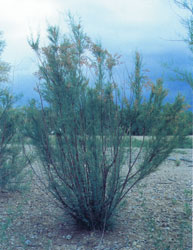
|
Saltcedar |
|
Saltcedars have long tap roots that allow them to intercept deep water tables and interfere with natural
aquatic systems. Saltcedar disrupts the structure and stability of native plant communities and
degrades native wildlife habitat by outcompeting and replacing native plant species, monopolizing
limited sources of moisture. Although it provides some shelter, the foliage and flowers of saltcedar
provide little food value for native wildlife species that depend on nutrient-rich native plant
resources.
More |
|
|
|

|
Purple Loosestrife |
|
Purple loosestrife adapts readily to natural and disturbed wetlands. As it establishes and expands,
it outcompetes and replaces native grasses, sedges, and other flowering plants that provide a higher quality
source of nutrition for wildlife. The highly invasive nature of purple loosestrife allows it to form dense,
homogeneous stands that restrict native wetland plant species, including some federally endangered orchids,
and reduce habitat for waterfowl.
More |
|
|
|
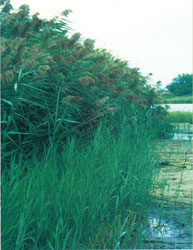
|
Phragmites |
|
Once introduced Phragmites invades a site it quickly can take over, crowding out native plants, altering
wildlife habitat, and becoming a monoculture very quickly. Phragmites can spread both by seed dispersal
and by vegetative spread via fragments of rhizomes that break off and are transported elsewhere. New
populations of the introduced type may appear sparse for the first few years of growth but due to the
plant’s rapid growth rate, they will typically form a pure stand that chokes out other vegetation very
quickly.
More |
|
|
|
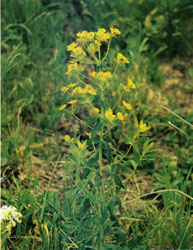
|
Leafy Spurge |
|
Leafy spurge displaces native vegetation in prairie habitats and fields through shading and by usurping
available water and nutrients and through plant toxins that prevent the growth of other plants underneath
it. Leafy spurge is an aggressive invader and, once present, can completely overtake large areas of open land.
More |
|
|
|

|
Canada Thistle |
|
Canada Thistle is declared a "noxious weed" throughout the U.S. and has long been recognized as a major
agricultural pest, costing tens of millions of dollars in direct crop losses annually and additional
millions costs for control. Only recently have the harmful impacts of Canada thistle to native species
and natural ecosystems received notable attention.
More |
|
|
|
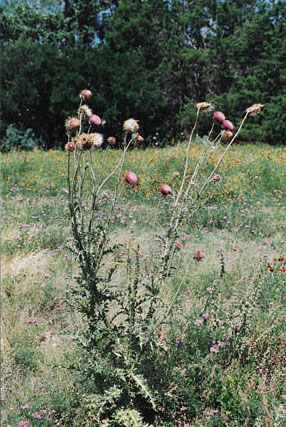
|
Musk Thistle |
|
Musk Thistle is an aggressive, biennial herb with showy red-purple flowers and painful spiny stems and
leaves. Each plant may produce thousands of straw-colored seeds adorned with plume-like bristles.
More |
|
|
|
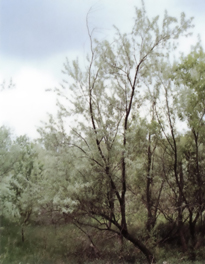
|
Russian Olive |
Although not declared a noxious weed in Nebraska it is on the states watch list. Russian Olive can
outcompete native vegetation, interfere with natural plant succession and nutrient cycling, and tax
water reserves. Because Russian Olive is capable of fixing nitrogen in its roots, it can grow on bare,
mineral substrates and dominate riparian vegetation where overstory cottonwoods have died.
Nebraska Ivasive Species Watch List
|
|
|
|
|